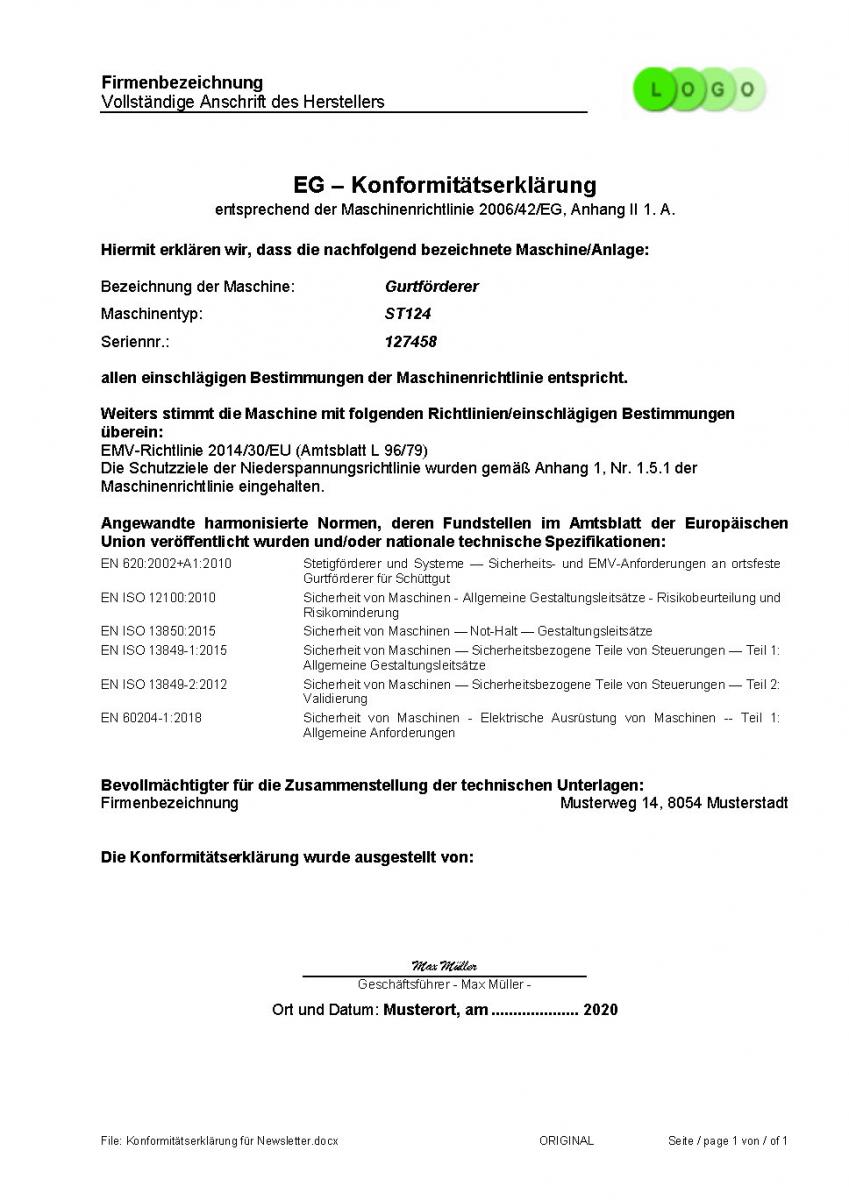29.06.20
According to the European Directive 2001/95/EC on general product safety, the person placing a product on the European market is obliged to place only "safe products" on the market.
Other specific European directives (e.g. for machines, electrical equipment, pressure equipment, products for use in potentially explosive atmospheres, medical devices, toys, etc.) may require mandatory proof of conformity. These requirements may also include the naming of specific technical standards on the declaration of conformity.
Special attention must be paid to the application of harmonized standards associated with EU directives, which are published in the Official Journal of the European Union. The reference of the harmonised standards in the Official Journal, i.e. the number, the date of adoption by CEN or CENELEC and the title, should be indicated on the declaration of conformity. Although the application of the harmonized standards is not a direct MUST, their application is a great advantage for a manufacturer - in addition to the sales argument - in that by complying with the European harmonized standards an additional statement about the conformity of the product (= presumption of conformity) can be made.
If the declaration of conformity indicates the reference of a harmonized standard, it can be assumed that the manufacturer has fully applied the specification of the standard. If the manufacturer has not applied all the specifications of a harmonised standard, he may nevertheless indicate the reference of the standard in the declaration of conformity, but he must describe in detail which specifications of the standard he has complied with or not applied.

Without indication of applicable (harmonized) standards, the issuer of the declaration of conformity may be required by the market surveillance authority, courts, ... to prove the conformity of the product in case of doubt - at the latest in case of damage.
In this case, the exhibitor must prove that at least an equivalent level of safety has been achieved as by applying harmonized standards.
In this case, the exhibitor must prove that at least an equivalent level of safety has been achieved as by applying harmonized standards.
From the point of view of a middleman, buyer, system integrator or operator, you may have obligations to perform additional safety evaluations (recurring and/or event-related). The recognized technical regulations and standards are also the yardstick here.
An unambiguous original naming of applied standards can save a lot of time, effort and additional communication with suppliers or other responsible persons in order to assess the compliant state at time X at the installation site Y.
In many cases it is already useful to clarify the compliance with technical standards within the scope of the drafting of contracts and terms of delivery.
